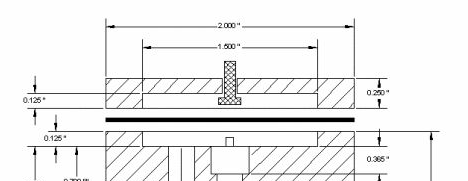I have a few people around the world building this engine now, and I am being asked about setting the valve timing. The set screws in the cams are difficult to access. I covered how I did this back on post #158, but here is a repeat of the way I did it. I was very lucky and the very first setting I used seems to work fine.
--There is a bit of trickery involved in setting the valve timing. You must have the cylinder head and lifters and rockers all in place, and have the valve lash set at about 0.010" when the lifters are not "up" on the cams. I sawcut a 0.030" slot in the end of the camshaft that is on the same side as the cam gear, so that I could turn the camshaft with a screwdriver. I removed the flywheel on the side where the timing gears are and turned the other flywheel in the direction I intended the engine to run (clockwise when viewed from the side with the gears on.) The set screws in the exhaust cam were tightened at any random spot by reaching up through the bottom of the engine. The intake cam was left loose on the shaft. The setscrews in the cam gear were left loose. The crankshaft gear was tightened on the crankshaft at any random position. I turned the flywheel until the piston was about 40 degrees or so before bottom dead center, then used a screwdriver to turn the camshaft in the opposite direction to the crankshaft until the cam lobe was just beginning to influence the exhaust valve. At that point, I tightened the camshaft gear setscrews. That "locked in" the exhaust valve timing. I then kept turning the flywheel until the piston was about 30 degrees before top dead center. At that point I reached up through the bottom of the engine (with great difficulty) and rotated the intake cam until it was just beginning to influence the intake valve, then I locked it in place. The cam set screws are "accessible" either through the underside of the engine or through the vertical slots in the "bolster" which stiffens the cylinder head plate. If you simply can not get at the screws for the intake side cam, you can remove the other flywheel, the ignition cam, and the entire sideplate to get to the intake cam set-screws to tighten them. I think I covered this in post #158 in the original build thread.---Brian






















































![DreamPlan Home Design and Landscaping Software Free for Windows [PC Download]](https://m.media-amazon.com/images/I/51kvZH2dVLL._SL500_.jpg)











